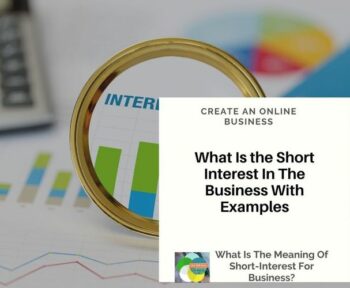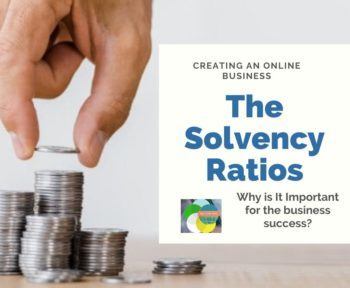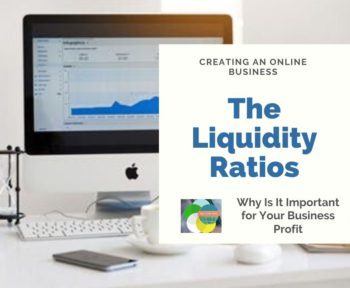What is Short interest? which refers to shares that have been sold short but have not yet been covered or closed out completely. Short interest, either as a percentage or as a dollar amount, is a reliable indicator of market sentiment.
There has never been a period when short interest has reached such an all-time high, signaling that investors are exceedingly negative (potentially overly-pessimistic). It is possible for the price of a stock to rise quickly when investors are negative. When short interest in a company changes substantially, it may be an indication that investors’ views on the stock. That are shifting, which can be either more pessimistic or more positive, depending on the situation.
Important Considerations
The phrase “short interest” is used to describe the number of shares of a company that are currently being sold short. And they have not yet been covered by the stock market. Although short interest is often expressed as a number, the percentage represents a more accurate representation.

An increase in short interest generally suggests that investors are getting more pessimistic, whilst a decrease in short interest frequently indicates that investors are becoming more bullish in their outlook. Extreme short interest, on the other hand, may be regarded as a positive indicator by contrarian investors.
It’s Amazing What You Can Learn With A Short Interest.
By examining short interest, it is possible to gain an understanding of how bullish or bearish investors feel about the market as a whole. Stock exchanges track and report on short interest in a variety of ways. In order to establish a baseline for short selling, investors may look to the reports they issue at the end of each month. The Nasdaq releases a short interest report twice a month, once in the middle of the month and once at the conclusion of the month.
It is possible that a big increase or decrease in a stock’s short interest over the previous month . This will serve as an excellent predictor of investor sentiment. A surge in short interest in a company from 10 percent to 20 percent, as an indicator of how negative investor sentiment has become, may be a warning sign. It has been estimated that the number of investors who predict that the stock price will fall by a factor of two has grown. When such a major shift occurs, investors may be motivated to go a little deeper into their study.
In the case of stocks with a significant degree of short interest, the likelihood of a short squeeze increases. Companies with higher levels of short interest and lower market floats are more exposed to the effects of short squeeze as the number of shortable shares diminishes. An extreme reading can have a wide range of meanings depending on the stock. It is possible that short interest in a well-established company with a long history of consistent profit generation will reach a peak of 10 percent. Then, while short interest in speculative companies that may regularly reach up to 30 percent.
The fact that a stock has reached an extreme level may indicate that a short squeeze is imminent. Occasionally, investors purchase stock, causing short sellers to cover their positions in order to avoid suffering a significant loss on their investments. As a result, the price of the stock moves upward.
It is also possible to measure short interest by counting the number of days. So, it will take to cover the loan. The average daily trading volume is calculated by dividing it by the number of shares that have been shorted. It will take at least 10 average trading days for short sellers to cover their positions if the short interest is one million shares. And then, the average daily trading volume is 100,000 shares on a given day. More bearish investors mean longer days-to-cover, but if they are wrong, it means a greater chance of a short squeeze in future trading sessions.
A stock’s short interest can be determined for each stock separately or collectively. An investor can obtain a sense of how the stock market is doing as a whole. It can do by dividing the total short interest on the NYSE by the average daily trading volume on the NYSE, which is available online.
A Few Examples Of How To Make Use Of Short Interest
Short interest can be used in a variety of different situations. Stocks with significant increases in short interest or a large number of days-to-cover. These are attractive prospects for short squeezes, according to traders who are interested in them. In order to avoid this, it is critical that the stock be given an opportunity to stabilize before it is sold off (although not always). When the price begins to rise, it is possible to consider taking a long position. Trading with a tight stop loss is recommended to keep risk under control. Trades should generally be considered short-term in nature because investors may be feeling down for legitimate reasons.

An investor who owns a long position in a stock may be interested in short interest. Short interest may be increasing as investors become more anxious about the stock or the wider stock market. And there may be a relationship between the two. The investor should take note of this and either protect their gains or prepare themselves for losses, whichever is the case.
The Put/Call Ratio And The Short Interest Rate Are Two Very Separate Measures.
The short interest and the put/call ratio are both indicators of the overall attitude of the market. Short interest is concerned with the number of short shares that are currently in existence. The put/call ratio is calculated using data from the options market. Call options are used to place bullish bets, whilst put options are used to place bearish wagers on the stock market. Shifts in the put/call ratio are another indicator that can be used to determine whether investors expect prices to rise or fall in the near future.
There Are Some Disadvantages To Using Short Interest.
Short interest is a valuable signal, but it should not be utilized as the key consideration in making an investment decision, despite the fact that it is. For investors, it is just another piece of information to take into consideration. Even at the extremes, changes in short interest may not have a significant impact on the price of a company right after they occur. Long periods of time can pass without a short squeeze. Or a significant decline in the stock’s price is taking place when the stock’s excessive reading continues. Furthermore, increased short interest does not forecast many major price drops in advance, which results in numerous large price decreases.
Short interest is published once a month on the majority of exchanges, but the Nasdaq reports short interest twice a month, which is unusual. Because the information traders rely on is always a little out of date, the actual level of short interest could be much higher or lower than the estimate in the report.









